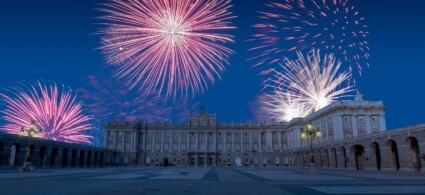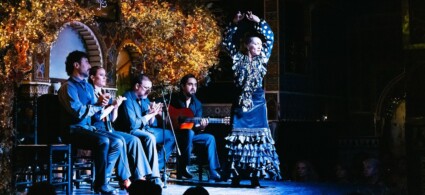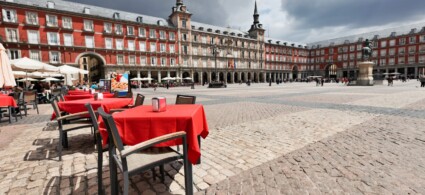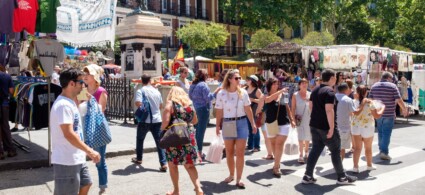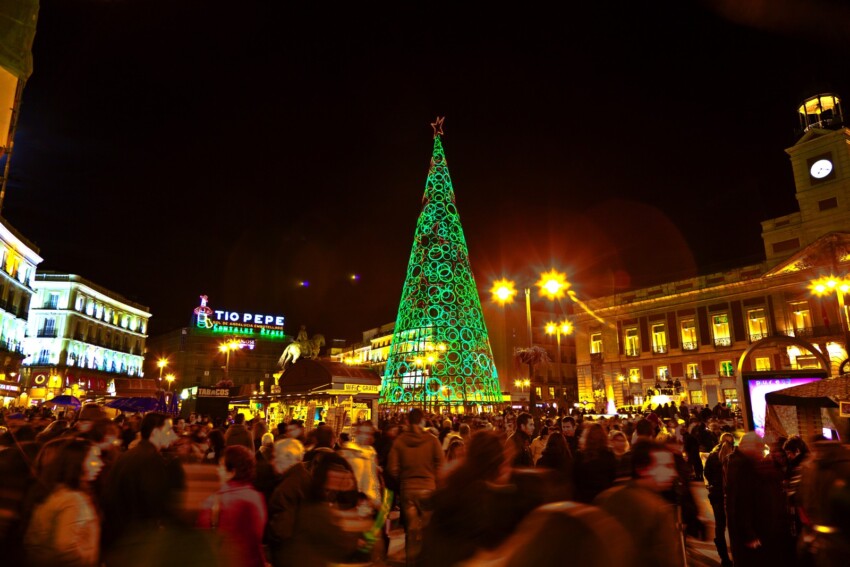

Madrid is a metropolitan city vibrant with energy and cultural ferment, with events of all kinds in all seasons of the year. A city that seldom sleeps, mostly in the afternoon hours of the hot summer months, is curious and likes the outdoors cannot help but love events, be they traditional or born in the wake of modern trends.
Not to be missed are the events that draw on the identity elements of Spanish culture, such as the traditional fiestas in which Madrileños participate with pride and enthusiasm wearing typical clothes, the bullfighting fairs or the festivals dedicated to flamenco, the exciting dance typical of this country.
These events are the best opportunity for tourists to get to know in depth this city that, in its metropolitan aspect, is perhaps the most Spanish of all Spain.
The most modern events testify to the cultural ferment and liveliness of Madrid, a capital city that never stands still: music festivals that make the youngest go wild, book fairs that attract oceanic crowds of visitors, architecture days, jazz concerts, food and wine events, dance festivals…
There is so much to do but we will help you choose. Thanks to the Madrid events calendar below, you can start planning your holiday according to your interests.
The first big event of the new year in Madrid is the Cavalcade of the Three Wise Men, which takes place in the late afternoon of 5 January: a tradition that is also popular in other cities and gathers huge crowds here.
Long queues of anxious children wait behind the barriers for the arrival of the great Kings of the Orient, Melchior, Gaspar and Balthasar, who, sumptuously dressed, ride through the heart of the city as the protagonists of a spectacular parade in which jugglers and street performers also take part.
In these parts they are much more popular than Father Christmas because they are the ones who bring the gifts to children’s homes after the dazzling lights of the parade have gone out.
The inherent playfulness and joy of the Spanish people explodes during the days of the Madrid Carnival, during which the streets and squares of the city are invaded by festive children and adults.
Numerous events are organised during the final week of the Carnival period, usually linked to a single theme.
The most eagerly awaited events are the Carnival Parade, the Ball and the Masks Contest organised by the Circle of Fine Arts and the meeting of bands and popular choirs (murgas and chirigotas) in the Plaza de la Villa. The Madrid Carnival symbolically ends with the ‘sardine burial’ celebration.
The cold month of February in the Spanish capital is enlivened by the bright colours and creative trends on show at ARCOMadrid, the international contemporary art fair.
Selected national and international galleries display paintings, photographs, sculptures, installations, video art, new media, illustrations and engravings. The programme also includes specific activities for collectors and professionals such as workshops, presentations, meetings and forums.
In Madrid, as in many Spanish cities, the celebrations of Holy Week are very much felt and experienced by the Madrileños with pride and involvement.
Concerts of sacred music in churches, processions carrying statues of the saints around the city decorated with candles, flowers and drapes of precious fabrics and traditional sweets on sale in the city’s pastry shops are the festive elements, both sacred and profane, that transform the city of Madrid in the week from Palm Sunday to Easter.
Among the numerous processions that are organised in the city of Madrid are: Cristo de la Fe y el Perdón, Nuestro Padre Jesús del Gran Poder y María Santísima de la Esperanza, Jesús Nazareno y la Virgen de la Soledad, la Virgen Dolorosa.
The tastiest trade fair in Madrid is the Salón de Gourmets or International Gourmet Fair, an international event organised annually by Grupo Gourmets dedicated to high-quality food and wine.
Delicatessen on display from all over Europe and a full calendar of workshops, showcooking, demonstrations, conferences and other themed activities make this international fair an unmissable event for all lovers of haute cuisine.
The international format of the Rock’n’roll Marathon has also landed in Madrid. The formula is the same as in other European cities: a marathon in the sporting sense of the word, with the full 42-km route, a 23-km half-marathon and a 10-km mini-marathon, in which rock music is the protagonist.
Participating in this event is the most fun, healthy and original way to explore the most characteristic streets in the centre of Madrid (and beyond), in time to music, of course! If you are lazy, you can always attend as a spectator.
The longest-running electronic and pop/rock music festival in the city of Madrid has been held since 1995. Under the label of musical biodiversity, Festimad brings together international stars and young emerging bands.
The more than twenty editions of the festival have been held in venues and settings as diverse as parks, plazas, stadiums, auditoriums, always garnering huge public acclaim: the total figure up to 2016 already spoke of one million spectators and more than 7000 artists.
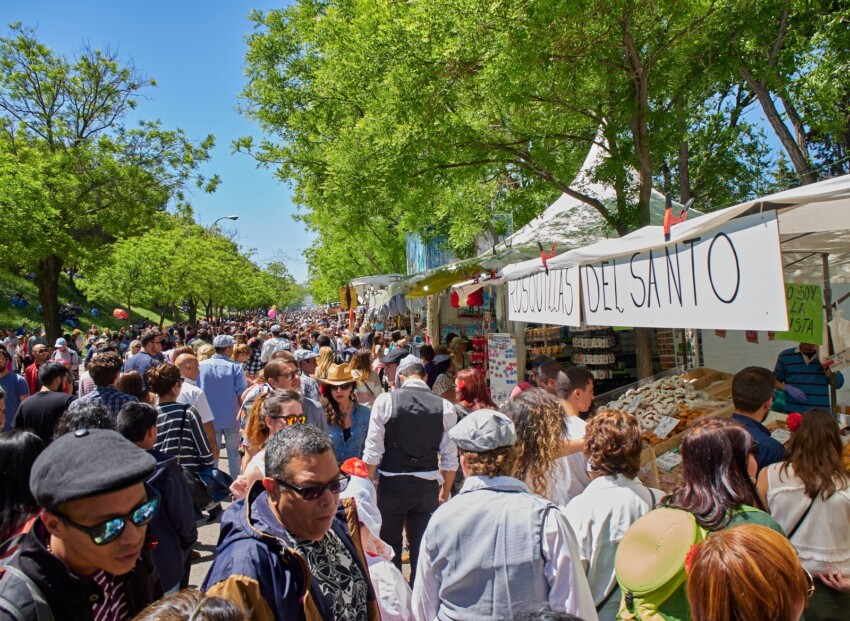
15 May is a special day to visit Madrid: during the celebrations for the Fiesta de San Isidro, the city’s patron saint, you will have the opportunity to get to know the more traditional Madrid and take wonderful photographs of chulapos and chulapas (Madrileños dressed in traditional dress).
The saint is celebrated in many ways: going on a pilgrimage to the Pradera and drinking water from the spring; eating rosquillas, aniseed-flavoured doughnuts; dancing the chotis, the traditional Madrid dance; attending the Feria Taurina de San Isidro, which kicks off the bullfighting season. Popular dances, music, food stands and stalls continue through the streets of the city until late into the night.
If you find yourself in Madrid between late May and mid-June, don’t miss the chance to take a walk through culture by visiting the Madrid Book Fair, the country’s biggest literary event. The first edition dates back to 1933 and in more than 70 editions the fair has always grown.
Rare books, new releases and discounted books are on sale at the more than 300 stands of bookshops, publishers and distributors participating in the event, all lined up along the tree-lined avenues of the Buen Retiro Park, which turns into the city’s cultural centre for the occasion.
The festival’s rich programme includes meetings with authors, presentations, lectures and activities for children.
A very special festival is the ‘young’ Mad Bird Fair, founded in 2014 but already a regular event for many Madrileños and others who want to rediscover the birds and birds of prey that populate the skies of Madrid.
Dedicated to birdwatching enthusiasts and ecological tourism in general, the fair includes an exhibition space with exhibitors and numerous events such as screenings, debates, and workshops for children.
The city of Madrid dedicates an unmissable festival to flamenco dance, one of Spain’s greatest artistic expressions, featuring the best dancers, singers and musicians.
Now past the ten-year mark, Suma Flamenca turns the city of Madrid into the international capital of flamenco. The scheduled performances, all of the highest level, are held in theatres, parks, cultural centres, museums and palaces scattered around the city and in the small municipalities of the Comunidad de Madrid.
Berlin? Barcelona? New York? No, Madrid is the city that hosts the largest LGBT event in the world. World Pride Madrid is the great gay pride festival that takes place over ten days between the end of June and the beginning of July in the Chueca district, a modern and tolerant area that has become the epicentre of the homosexual community.
Open-air concerts, theatrical performances, debates on human rights, a grand parade through the city streets and the symbolic handover of the baton to the city of New York are the main ingredients of the celebration of diversity, open to all people who want to have fun without prejudice.
Beginning in June and continuing until September, the summer festival of the city of Madrid: Veranos de la Villa is an eclectic container of musical, theatrical, circus, sports and pyrotechnic events. There is no artistic discipline or district of the city that is not involved in some way in this festival.
With at least one show scheduled every day, Madrid’s summer is always lively and exciting.
Fans of tattoos, bodypainting, airbrushing, skateboarding, BMX, and motorbikes meet at Mulafest, the urban trends festival organised by the MULA collective and the Madrid Fair that has become a celebration of underground culture in all its forms.
In a chill out setting where creators of different disciplines interact and confront each other, visitors can enjoy exhibitions and demonstrations, micro-theatre performances, live concerts and DJ sets.
August is the month of traditional Madrilenian fiestas, which take place in the streets of the city, cheerfully decorated with flowers and garlands. True Madrileños wear traditional dress, dance the chotis and stay out late into the night with music, tapas and cerveza.
Join them and experience the enthralling atmosphere of the verbenas, Madrid’s festivals or popular celebrations. It starts with San Cayetano in the Rastro/Embajadores area, followed by San Lorenzo in Lavapiés and ends on a high note with the most important festival, the Verbena de la Paloma in La Latina.
To say goodbye to the summer, Madrid does things in a big way. The last unmissable event of the season is the DCODE Festival, an open-air music festival in the city centre.
It is a festival of indie/rock and pop music that lasts from early afternoon until late at night, with a line-up of big international stars and up-and-coming bands.
In October, Madrid welcomes architecture experts and enthusiasts with three events dedicated to them: Open House Madrid, Madrid Otra Mirada and the Semana de la Arquitectura.
Of these, the best known is Architecture Week: organised by the College of Architects of Madrid in collaboration with the local authorities, it is a unique opportunity to participate in free guided tours to discover the city’s most archaeologically interesting buildings, many of which are usually closed to the public, and itineraries to the most singular places.
October also sees the conclusion of the bullfighting season with the Autumn Fair, which is one of the most important annual events in Madrid’s great bullfighting tradition, together with the San Isidro Fair and the Minifiera de la Comunidad de Madrid.
The programme includes six bullfighting shows in the prestigious Plaza de Toros de las Ventas.
November in Madrid is jazz, with a prestigious month-long festival featuring great Spanish and international artists. Classic jazz and new contemporary trends, swing, blues are the beats of the JazzMadrid Festival, with a programme that includes concerts, debates, screenings and exhibitions.
A chic event in the Spanish capital is Madrid Horse Week, a fair dedicated to horse riding that in just a few editions has already conquered a large international audience thanks to exciting competitions and races at world level, a large exhibitor area and a pony park where the youngest can experience their ‘horse baptism’.
In mid-November Madrid turns the spotlight on dance in all its forms: Madrid en Danza is a festival that lasts until the first week of December with a programme of classical and contemporary performances, from academic ballet to the most innovative trends on the international scene.
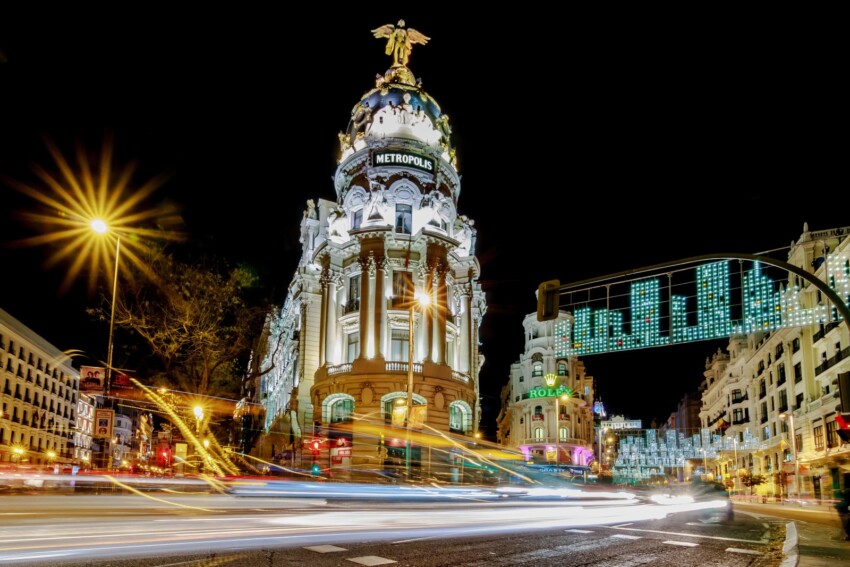
From the end of November until Epiphany, Madrid lights up festively, with installations, lights and decorations in all the main streets of the city. Christmas is a magical time to visit the Spanish capital, pervaded by an atmosphere of joy and frenzy.
A Christmas market and exhibitions of nativity scenes, perhaps less famous than those in the northern capital but no less fascinating, are also organised here.
Since 1964, the last sporting event of the year in Madrid is the San Silvestre Vallecana, a 10-km race held every 31 December in the Vallecas district. With a section for amateurs and one for professionals, the race sees a very high number of participants, now more than 40,000 at each edition.
You too might want to think about it… after a race like this, you will have no pangs of conscience if you binge on New Year’s Eve dinner!
If you prefer bacchanalia to running, wait until the evening of 31 December and after the New Year’s Eve dinner go and wait for the stroke of midnight at Puerta del Sol, the central square, where the start of the New Year is marked by the chimes of the Real Casa de Correos clock: it is traditional to eat a grape at each chime and make a wish.
Here is the calendar of public holidays in Madrid:
City Card allow you to save on public transport and / or on the entrances to the main tourist attractions.

